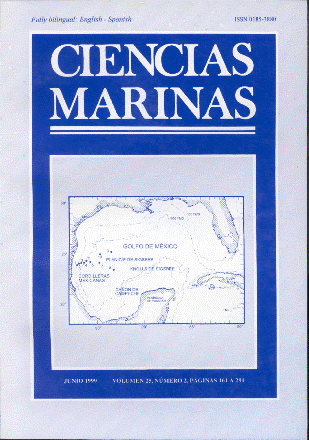Changes in the copepod community during the 1992–93 Enso at San Lorenzo channel, Gulf of California
Main Article Content
Abstract
The structure of the copepod community from the San Lorenzo Channel, Gulf of California, is described for 1990 and the 1992–93 ENSO. The main difference between sampling periods was the decrease of the calanoid Nannocalanus minor. This oceanic species, distributed mainly in the equatorial zone, was one of the dominant in the plankton of the channel from February to August 1990. During the 1992–93 ENSO it appeared to be partially displaced by another equatorial but smaller species, Clausocalanus arcuicornis, and the tropical coastal species, Undinula vulgaris. Among the carnivores, Euchaeta marina decreased during ENSO, while the incidence of Candacia truncata and Candacia catula was observed. The mesh size of the net used noticeably affected the community structure observed, due to the escape of organisms through the net. With the net of 300 µm mesh size, 30% more species were collected than with the net of 500 µm, and the abundances of the smaller species presented high escape percentages with the latter.
Downloads
Article Details
This is an open access article distributed under a Creative Commons Attribution 4.0 License, which allows you to share and adapt the work, as long as you give appropriate credit to the original author(s) and the source, provide a link to the Creative Commons license, and indicate if changes were made. Figures, tables and other elements in the article are included in the article’s CC BY 4.0 license, unless otherwise indicated. The journal title is protected by copyrights and not subject to this license. Full license deed can be viewed here.

